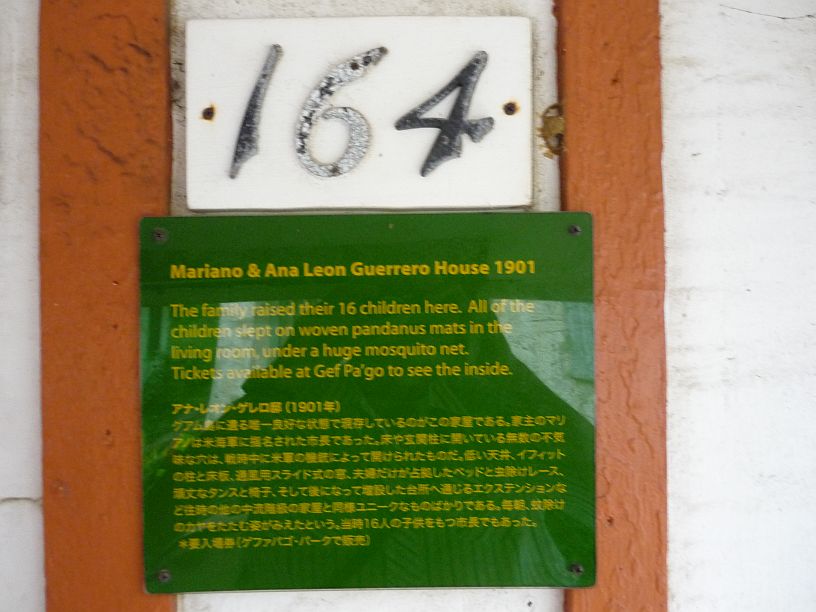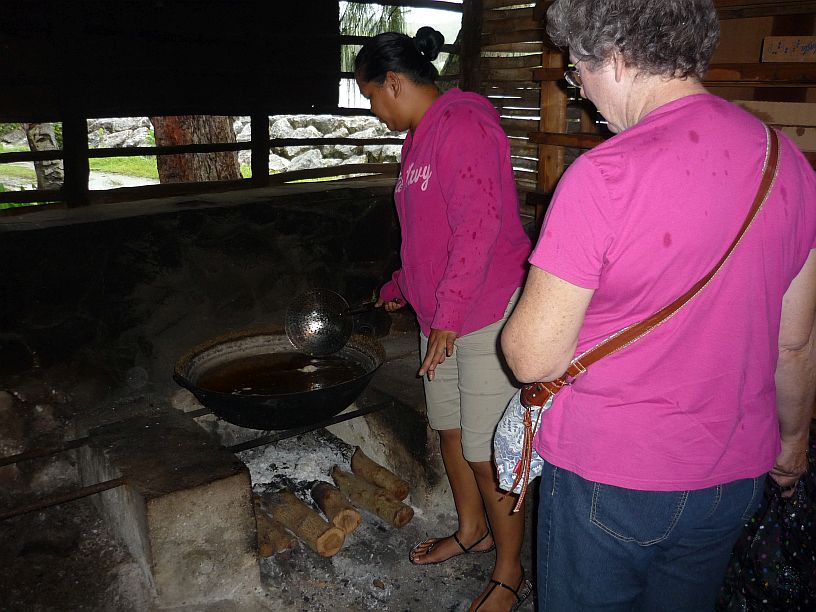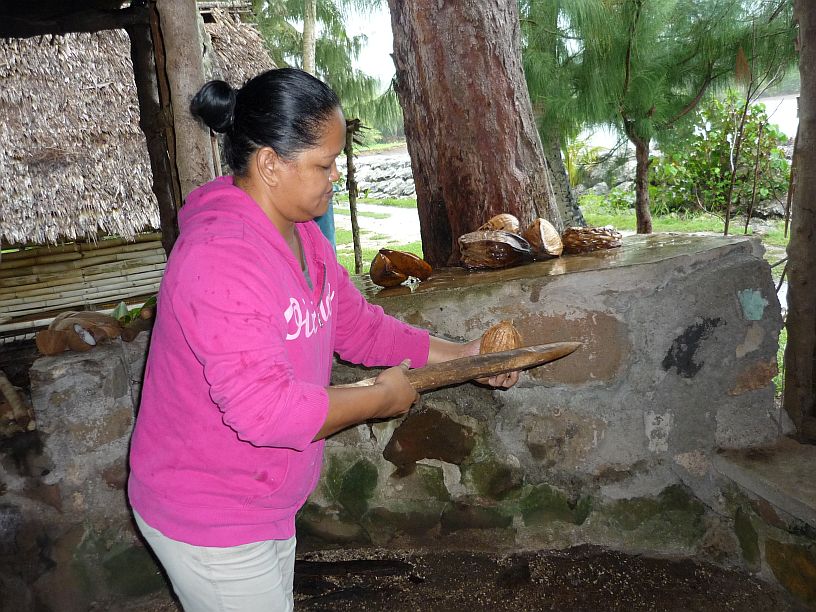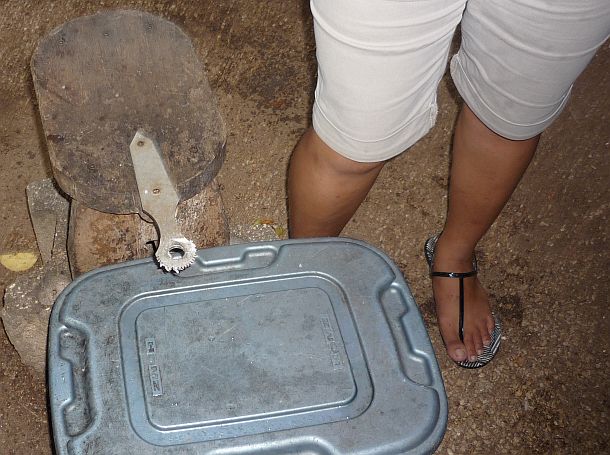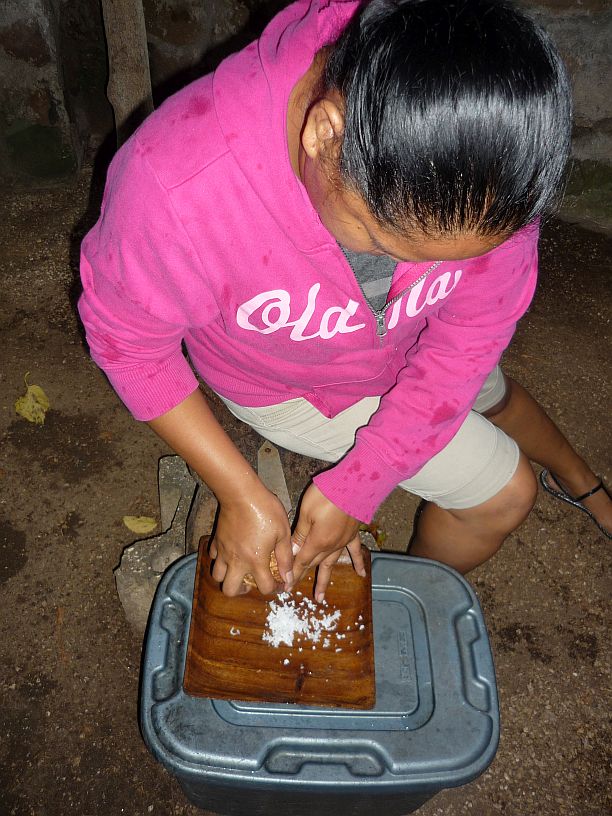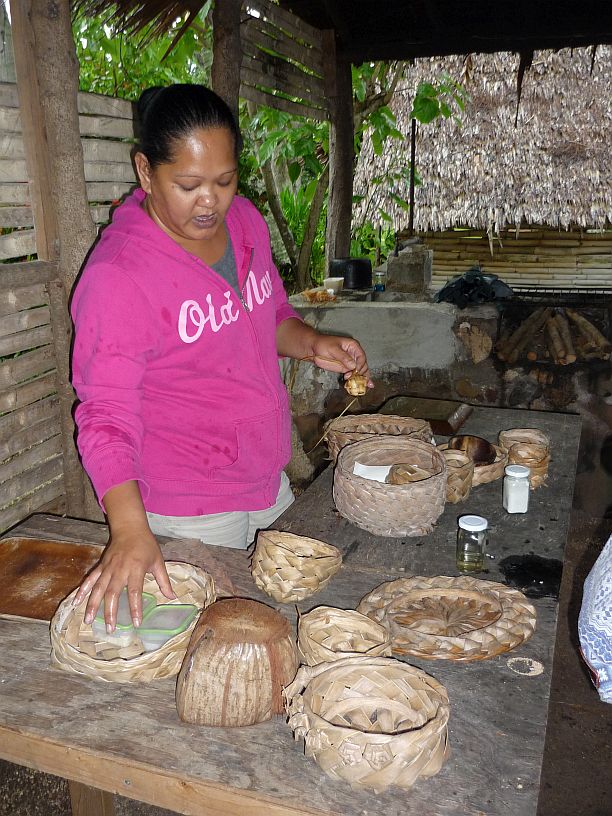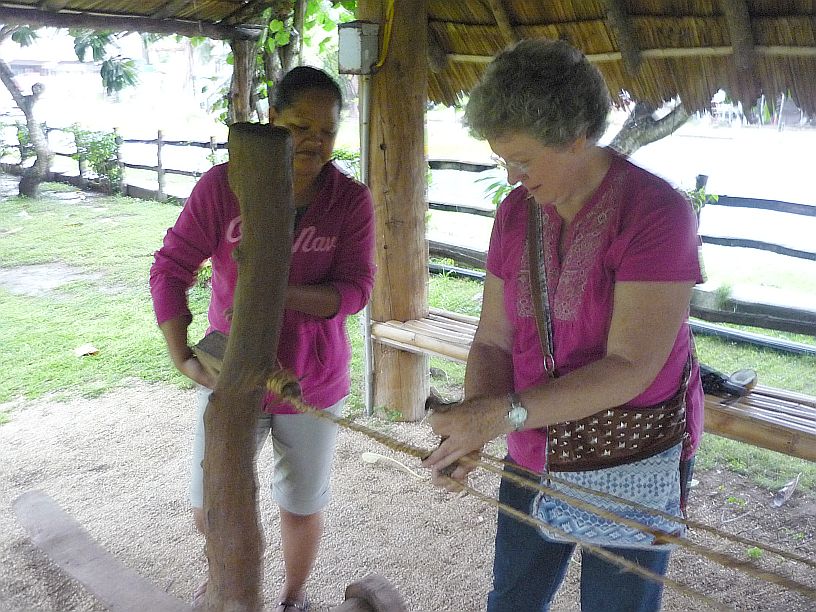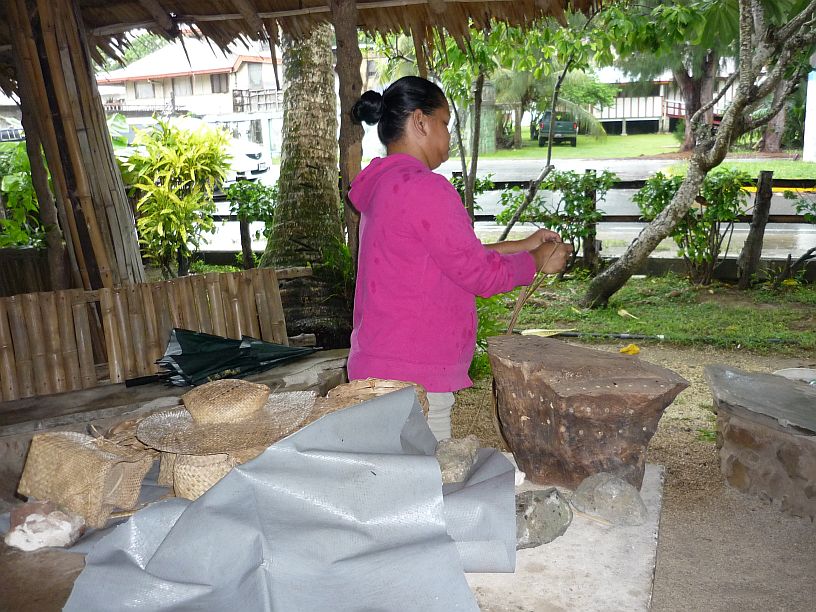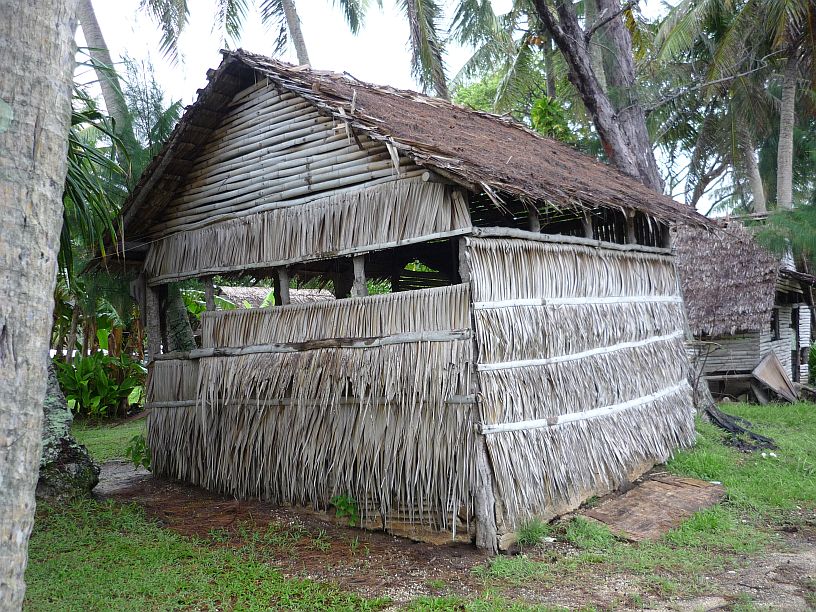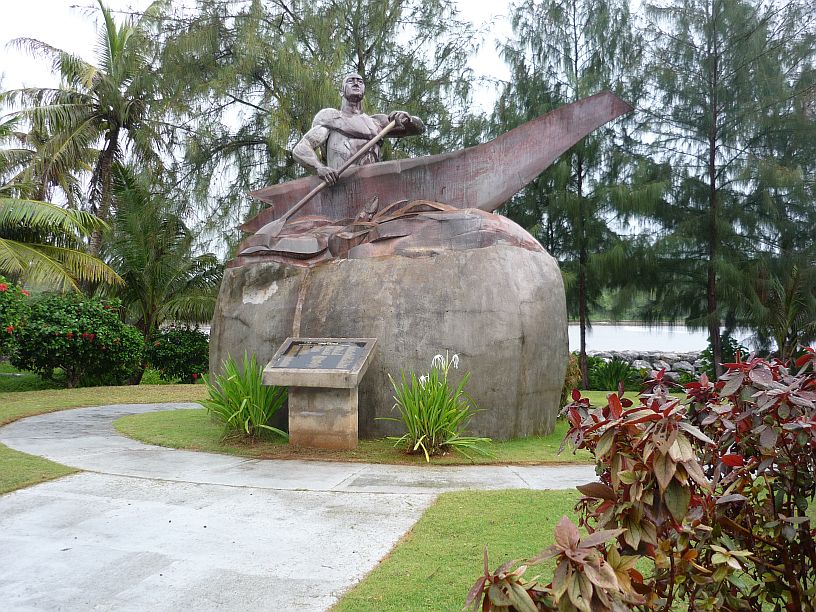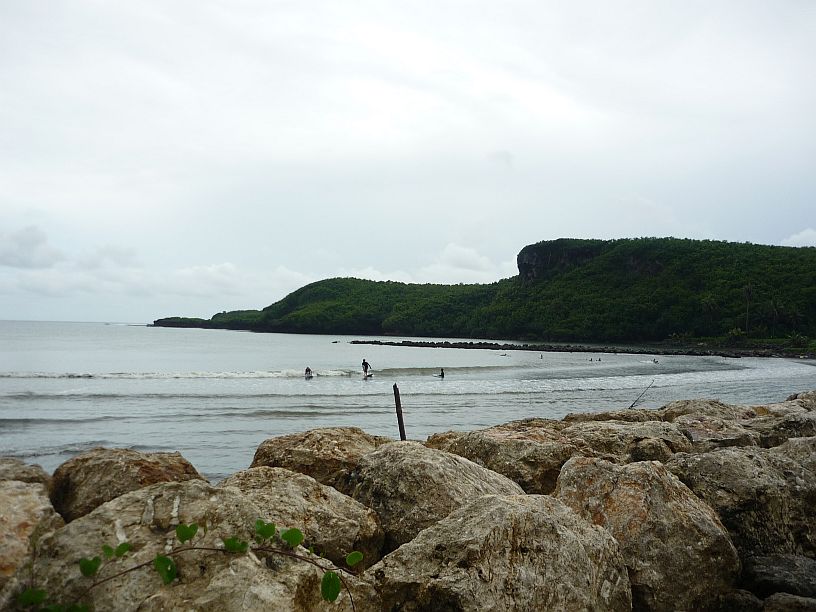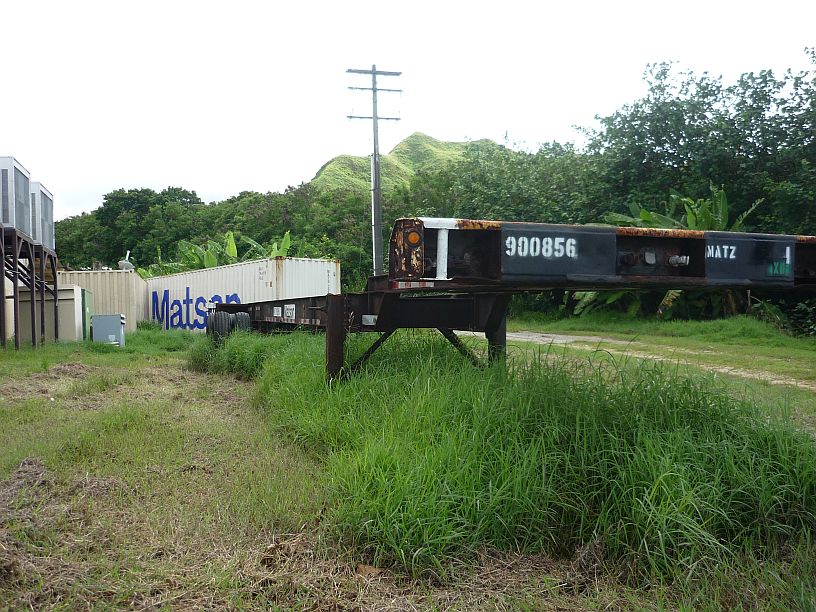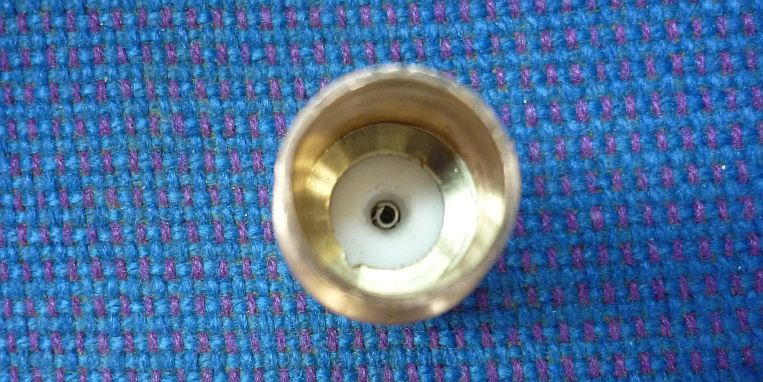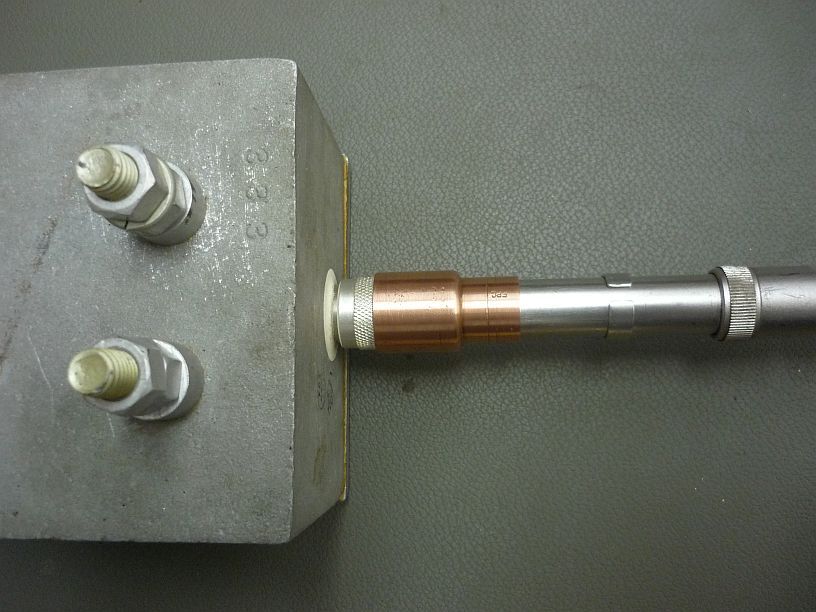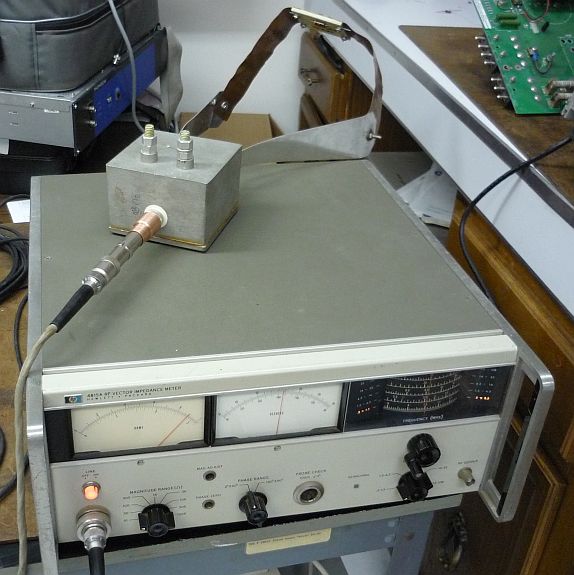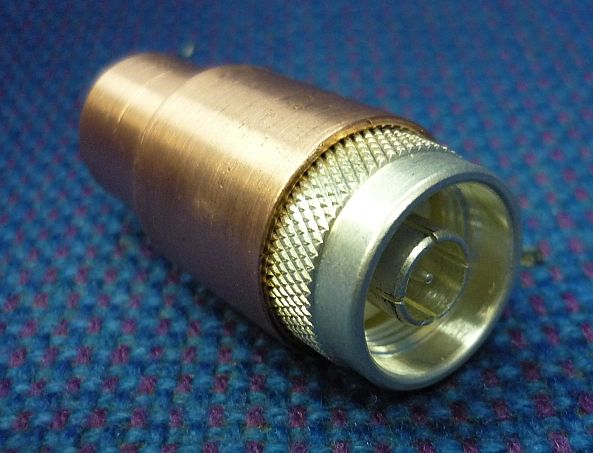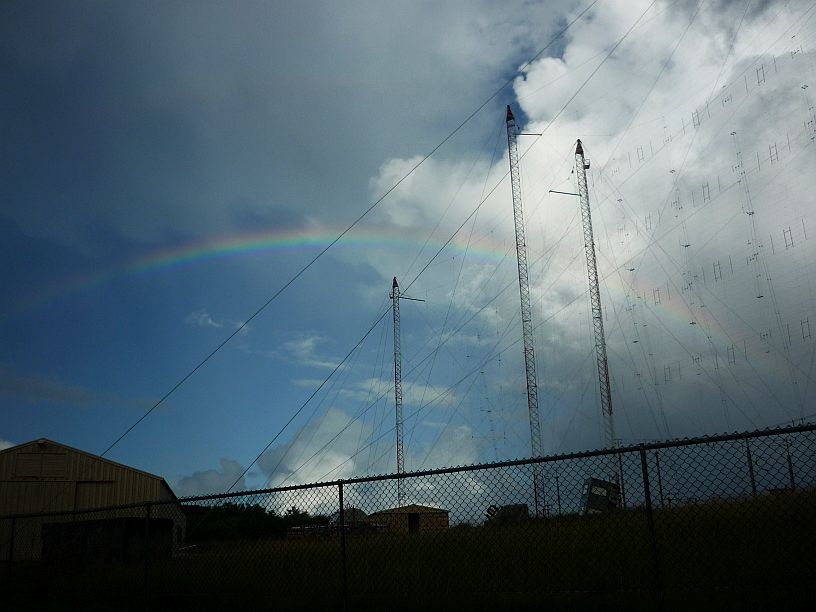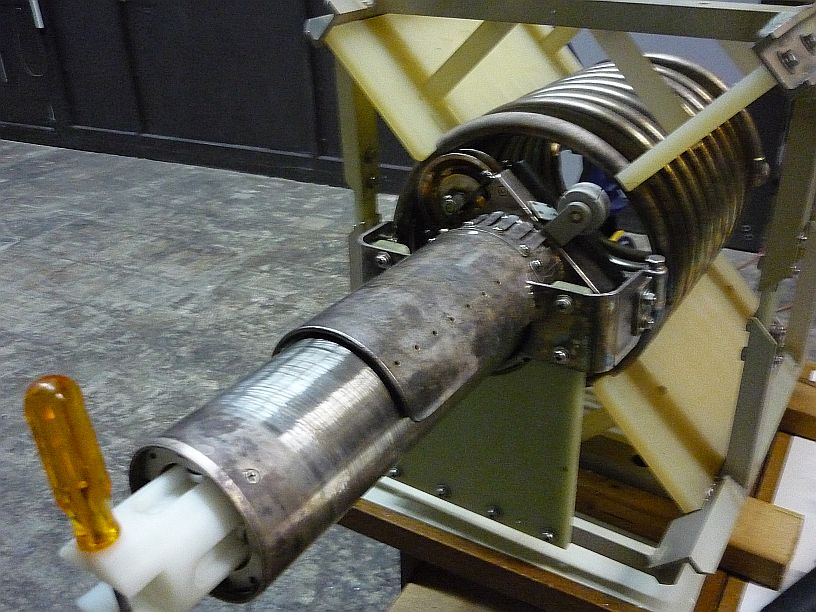The rainy season has definitely come to Guam, but we are still trying to visit the sites whenever possible.
Since this is our last weekend here, this is our last chance to visit the Village of Inarajan at the far south end of Guam. This website gives excellent background information on the village — http://www.guampedia.com/inarajan-inalahan/
Some of our photos are lacking in clarity as a result of the very rainy weather:
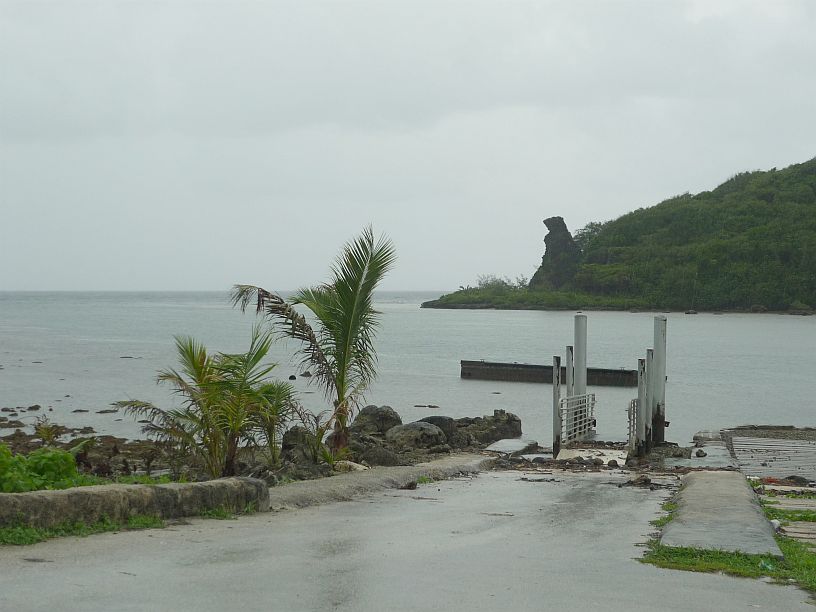
Bear Rock at Agfayan Bay about 1/2 mile SW of Inarajan on route 4– the Agfayan boat ramp is in the foreground.

Salaglula Pools near Inarajan are natural pools. These are located midway between Bear Rock and the village. Last time we drove by (also during rain) there were children diving from the high platform at the light pole.
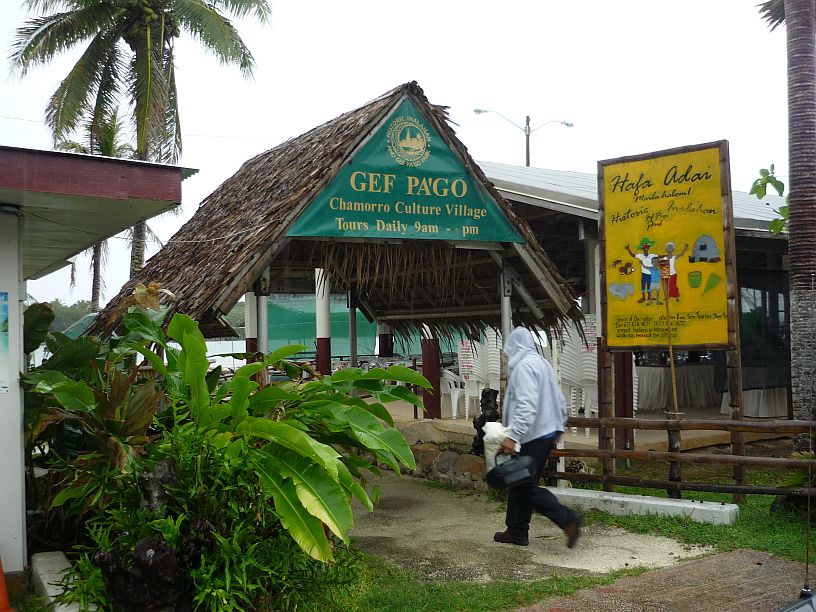
Chamorro Cultural Village is centrally located in Inarahan. It is well worth the $10 ($6 for residents) to take the tour.

This two room house was home to a family with 16 children. The addition on the back was added later and is still occupied.
Demonstrating the making of salt from sea water.

Virginia drinks the coconut milk. The edges were amazingly straight considering how it was cracked open.
Showing some of the products made for the coconut trees.

Community oven — a baker did the baking as members of the community brought their meals to be cooked.
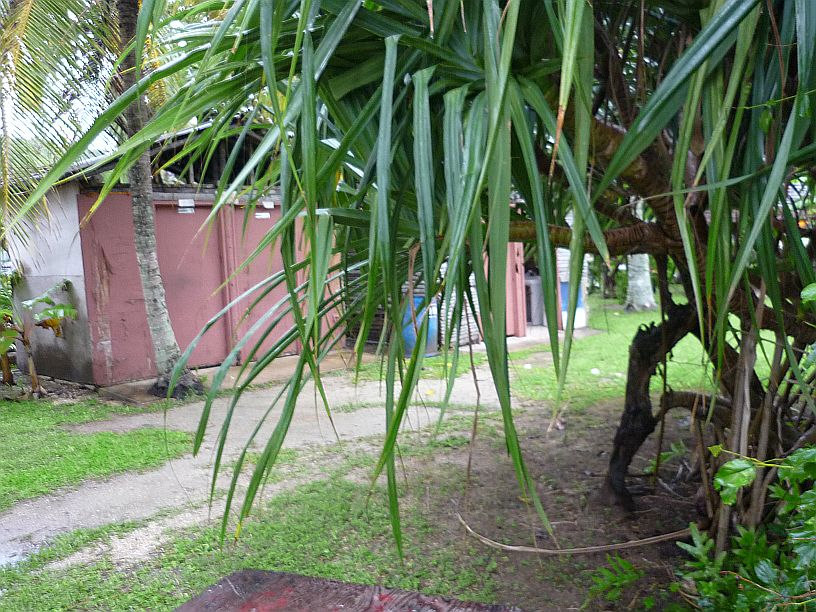
Although rustic, we are sure these restrooms are very modern compared to the Chamorro’s original facilities! The plants in the foreground are pandanus palm.
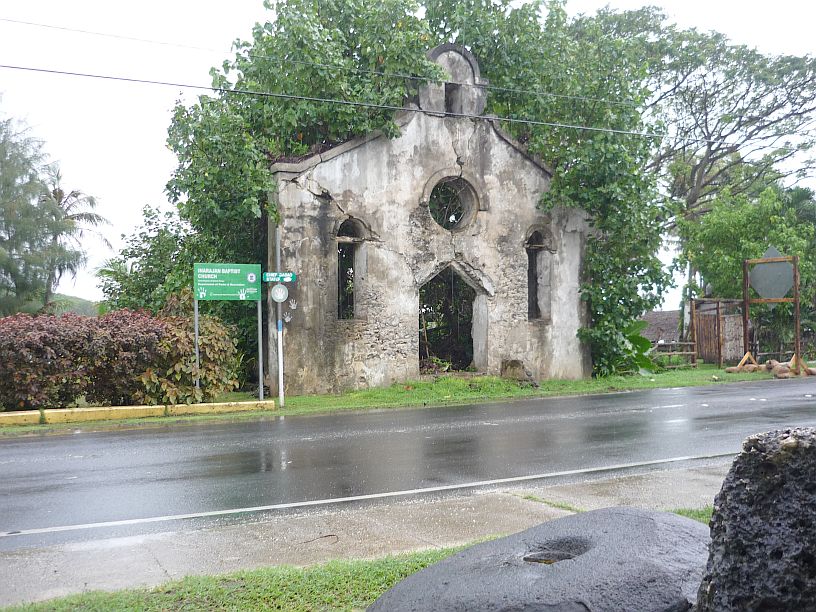
Adjacent to the Chamorro Cultural Village are these Baptist Church ruins, supposedly built in 1925. Now only the front wall remains.
The most I could find about the history of this church was at this website —
http://paleric.blogspot.com/2011/03/inarajan-baptist-church.html
For a readable copy of the poem engraved on the plague —
For a summarized version of the legend —
http://chiefgadao.tripod.com/id1.html
On the way home we stopped by Talofofo Bay, about a fourth of the way up the west side of Guam:
We passed Talofofo Cave returning home, but decided it was too wet to stop. Passing through the village of Talofofo, we joined up with the Cross Island Road (Rt 17) to complete our day’s trek.

